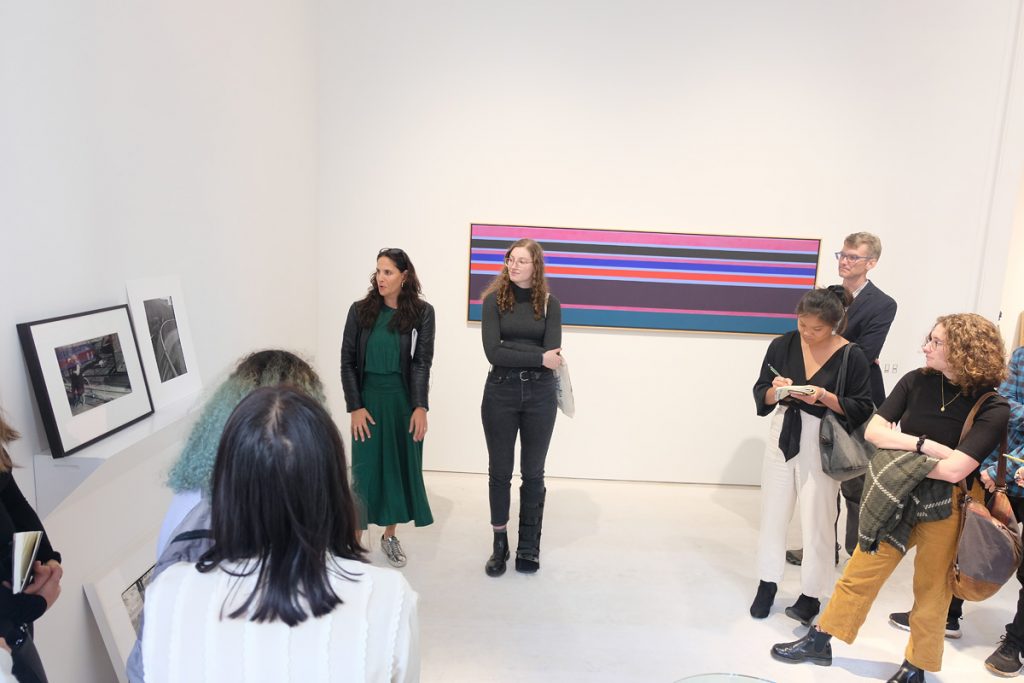Lauren Panzo, Director, Pace MacGill Gallery
By Emma Fighera ’20
Throughout this course, we have discussed the place of photography within the tradition of fine art, and its struggle to gain recognition as a serious artistic mode. As a relatively new technology, it makes sense that photography took some time to earn its credibility as a medium.
I figured, though, that this exclusionary mentality was part of the past — that in this technological contemporary age, photos are as critically recognized as painting and sculpture. My experiences in New York showed me that this is not true. Many of the galleries we visited did not feature photography, the photo collections at the Whitney, Met, and MoMa are miniscule compared to their other holdings, and the financial value of photographs sold by Christie’s is a fraction of the worth of other media. Even today, photography still fights for the kind of artistic acceptance that comes so easily for other modes. In being able to take a first-hand glimpse at the inner workings of the art world, I was disappointed and surprised to find that photography is significantly underrepresented in contemporary art. This trip provided me with a better informed context through which to view art images, an important realization as someone who studies photography.

After discovering this general absence of photography from the fine art scene, I gained a greater appreciation for galleries like Pace MacGill, where Lauren Panzo showed us a number of prints by Diane Arbus, Robert Frank, and Peter Hujar. Hanging in Panzo’s office was a stunning print by Richard Misrach, an artist who I did not know before the trip, from his “On the Beach” series. Panzo went into detail about some unusual requirements of her job — traveling internationally alongside works of art, sometimes for weeks at a time. Her specific descriptions were more informative, and more entertaining, than the brief, vague overviews other directors gave about their obligations. While I did not expect to see photography so underrepresented, I was nonetheless ecstatic to see in person original prints of “The Steerage” by Alfred Stieglitz, multiple images by Edward Weston, and Diane Arbus’s iconic “Child with Toy Hand Grenade in Central Park.” Additionally, Panzo showed the group images from Robert Frank’s “The Americans” series, and from Gary Winogrand’s “The Animals.” This trip afforded me a special insight into the role of photography in the contemporary art market — with this as a baseline, I am excited to see how the value and function of photos change in the future.